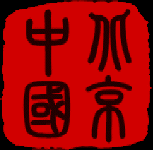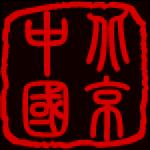 |
Chinese Culture Chinese Inventions |
 |
 |
Chinese Culture Chinese Inventions |
 |
Some notable Chinese InventionsPaper, Ink and PrintingPaper. This was invented about around 100 BC. Early papers were made of materials such as bamboo pulp and silk. These early papers were thicker and stronger than the paper we are familiar with today. These papers could be used for raincoats and even armour! Paper was a very important invention because it facilitated record keeping and learning as was the step of joining paper sheets into ... Books (868 AD). Ink. The invention of 'Indian ink'. Moveable type. This greatly enhance the usefulness of printing presses, credited to Bi Sheng in the year 1045 AD. Paper money. Technological and Engineering InventionsParachute and Hot-air balloon. Crossbow. Gunpowder, fireworks and matches. Belt drive and Box Section Pump (that was of great utility in agriculture). Segmental arch bridge and Suspension bridge. Wheelbarrow ('wooden ox'). Fan. The early ones were made from bamboo and silk and some still are. Umbrellas. Noodles. Sternpost rudder for boats. Mechanical clocks. Cast iron and Steel making. Blast furnace. Even early ones were water powered. Seismograph. These remarkable devices could also indicate the directionof the earthquake. Compass. By the third century AD, Chinese scientists had studied and learned much about magnetism in nature. For example, they knew that iron ore, called magnetite, tended to align itself in a North - South. Scientists learned to make magnets by heating pieces of ore to red hot temperatures and then cooling the pieces in a North/South orientation. The magnet was then placed on a piece of reed and floated in a bowl of water marked with directional bearings. With improved design, navigational compasses were widely used on Chinese ships by the eleventh century AD and greatly facilitated exploration and trade. Scientific InventionsAbacus (SuanPan). In a sense the first computer. Astronomical observatories. Decimal mathematics. Accupuncture. Agrcultural InventionsHarnessing animals for agriculture. Row cultivation. In Europe, as in the rest of the world, farmers practiced scatter seed farming. This is the practice of throwing the seed onto the fields at random. By throwing the seed randomly in this way, about half the seeds would not grow and also make it impossible to weed the field. The Chinese on the other hand, planted individual seeds in rows, thus reducing seed loss. Further, the planting of crops in rows also allowed for intensive hoeing, which in turn reduce weeds. Seed drill. The seed drill complemented row farming. The seed drill is a device that plants seed into the ground far more efficientlythan doing it by hand, thus allowing the farmer to plant more acreage. The seed drill was introduced to Europe in the sixteenth century, 3,500 years after the Chinese had invented it. Recreational InventionsPlaying cards. Chess. Kite. |
Share this page
|
China Travel and Culture Videos Home